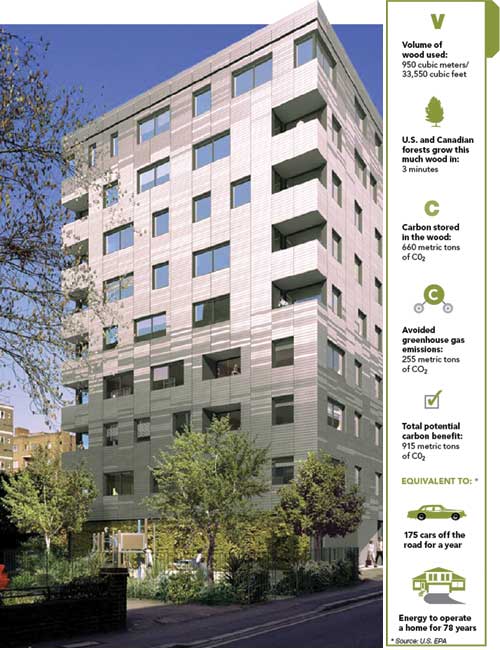Calculating Carbon Footprint
In the U.S., increasing emphasis on the effects of carbon in the atmosphere has motivated the development of many calculators for various products and activities. The two calculators used in this course can help U.S. architects understand and compare the carbon impacts of their building designs.
Project: Stadthaus The Stadthaus includes eight stories of cross laminated timber (CLT) over one story of concrete. Detailed estimates presented at the concept stage indicated that building the structure in wood would cost approximately 15 percent less than the same structure in concrete. |
Developed by the U.S. Environmental Protection Agency, the Greenhouse Gas Equivalencies Calculator1 translates emissions data into recognizable equivalents such as annual greenhouse gas emissions from passenger vehicles or CO2 emissions from the energy used to operate a home for a year. The second tool2 was developed to allow users to calculate the carbon benefits of wood buildings, including the amount of carbon stored in the wood products, emissions avoided by not using steel or concrete, and amount of time it takes North American forests to grow that volume of wood. It does this in one of two ways:
- If the volume of wood products is known (including lumber, panels, engineered wood, decking, siding, and roofing), the carbon calculator will provide a detailed estimate for that specific building. The more detailed the information, the better the results.
- If volume information is unknown, users can select from a list of common building types and receive an estimate based on typical wood use.










